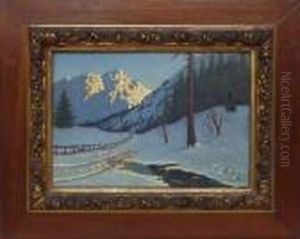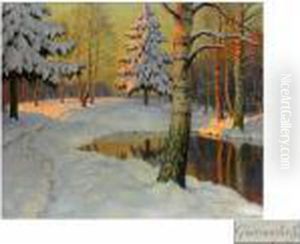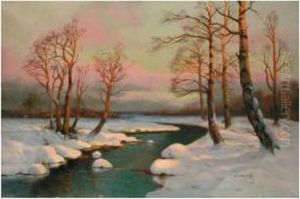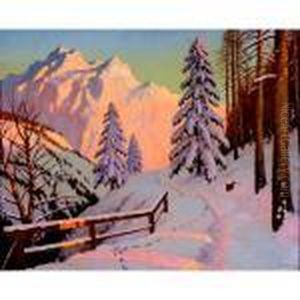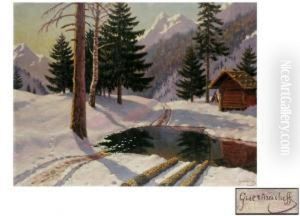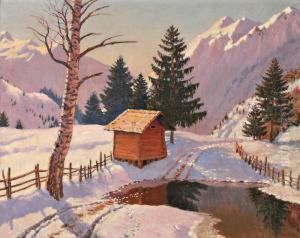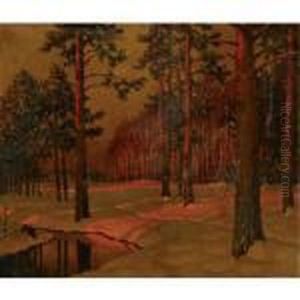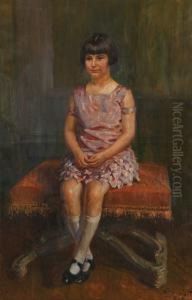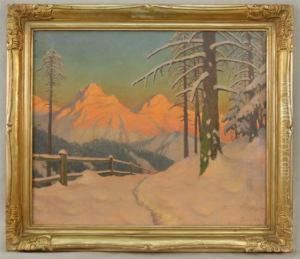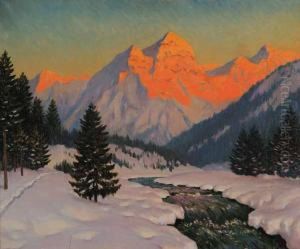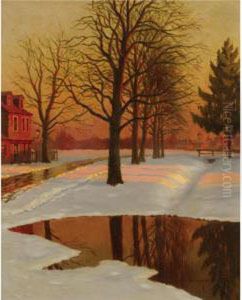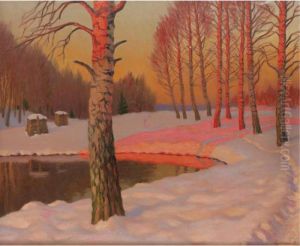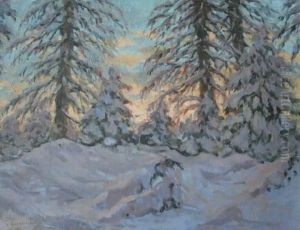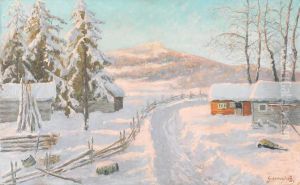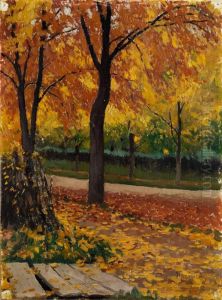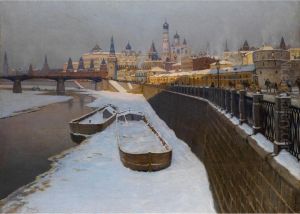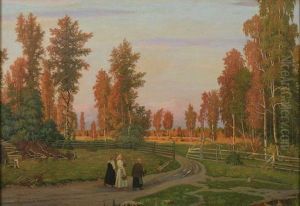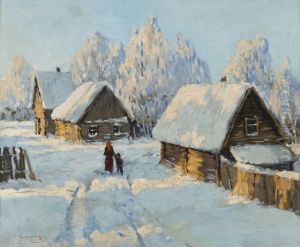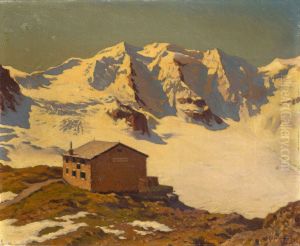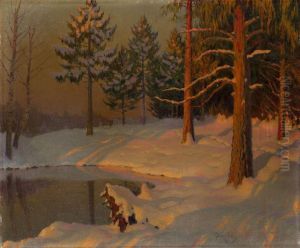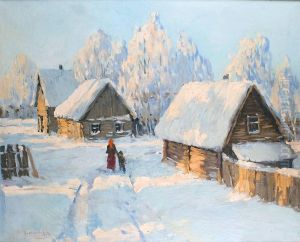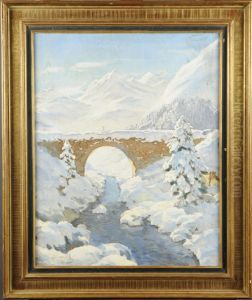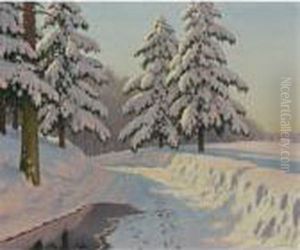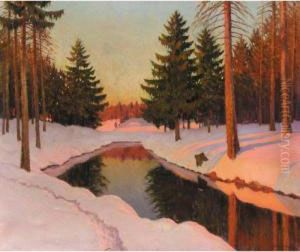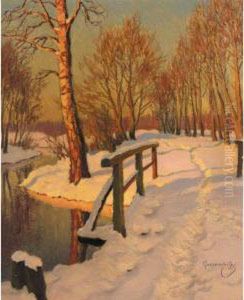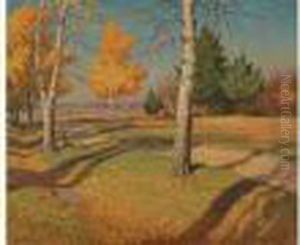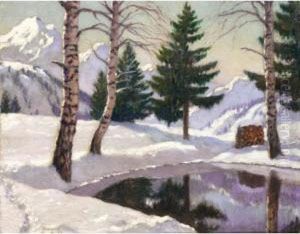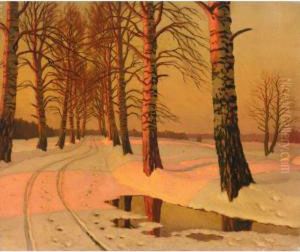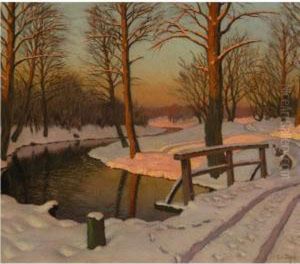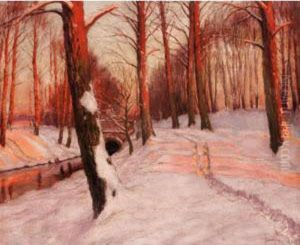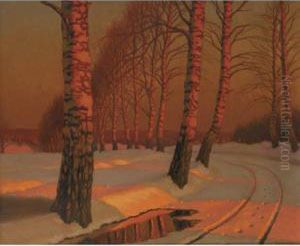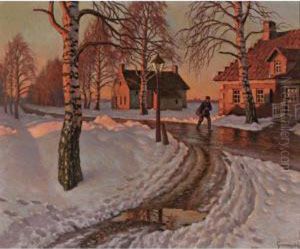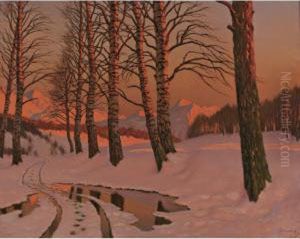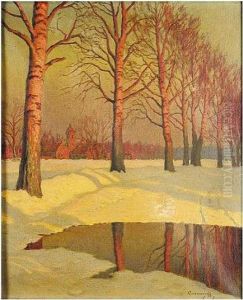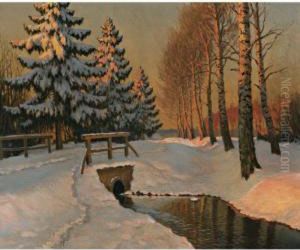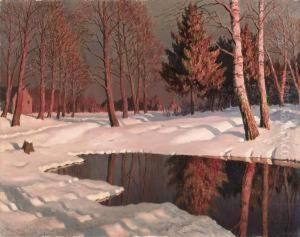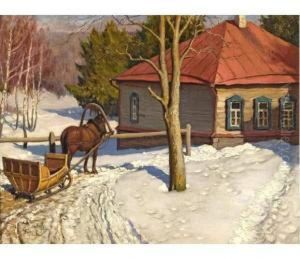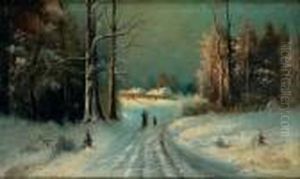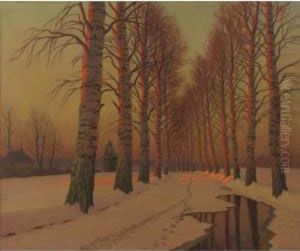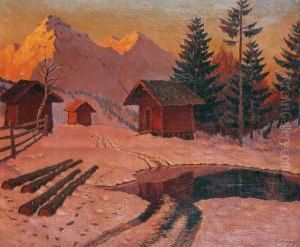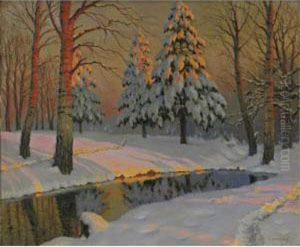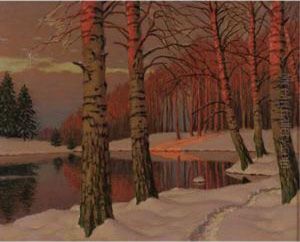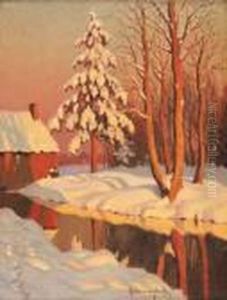Michail Markianovic Germasev Paintings
Michail Markianovic Germasev was a Russian painter born in the town of Pyatigorsk in the North Caucasus region on May 4, 1867. He is recognized for his significant contributions to Russian art, particularly during the late 19th and early 20th centuries. Germasev displayed a talent for art at an early age and pursued his passion by enrolling at the Moscow School of Painting, Sculpture and Architecture. There, he studied under notable Russian artists such as Valentin Serov and Konstantin Korovin, who were instrumental in shaping his artistic style.
Germasev's work is characterized by its vivid portrayal of Russian life and landscapes, capturing the spirit of the nation through a blend of realism and impressionism. His paintings often depicted scenes of peasant life, urban landscapes, and historical events, reflecting his deep interest in the cultural and social fabric of Russia. He was also known for his portraits, which skillfully conveyed the personality and character of his subjects.
Throughout his career, Germasev participated in numerous exhibitions and was a member of several artistic societies, including the Association of Traveling Art Exhibitions (Peredvizhniki), where he was actively involved in promoting art across Russia. He was also a part of the Union of Russian Artists and contributed to the Mir Iskusstva (World of Art) movement, which aimed to break free from the academic restrictions of the time and embraced a more artistic freedom.
During the tumultuous years of the Russian Revolution and subsequent civil war, Germasev's work underwent a transformation. He began to focus more on graphic art and worked in various fields, including stage design and book illustration. Despite the challenges of the era, he continued to create artworks that resonated with the changing times.
Michail Markianovic Germasev's legacy as an artist is preserved through his contributions to the Russian art scene and the works he left behind, which remain an important part of Russia's cultural heritage. Unfortunately, his life was cut short when he died on July 16, 1931, in Leningrad (now Saint Petersburg). His art continues to be celebrated and studied for its unique blend of Russian tradition and innovative artistic techniques.
